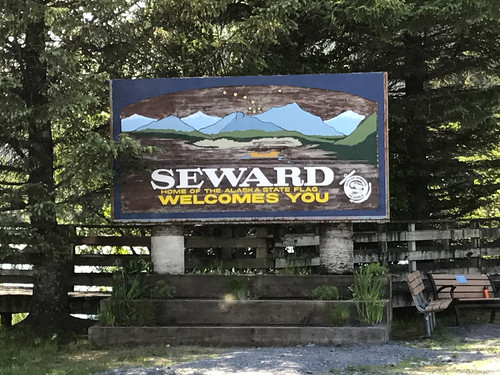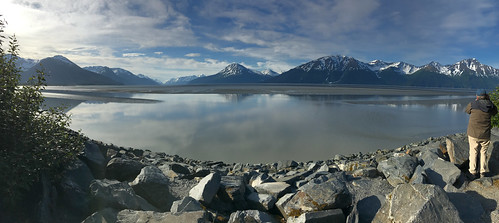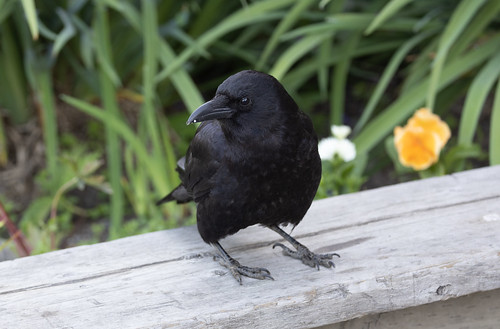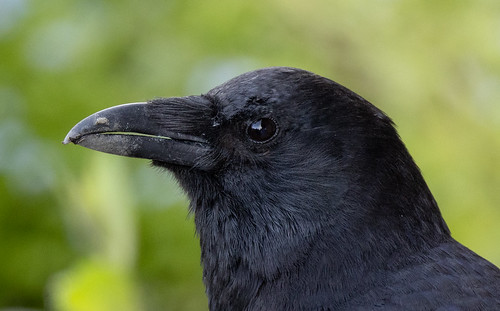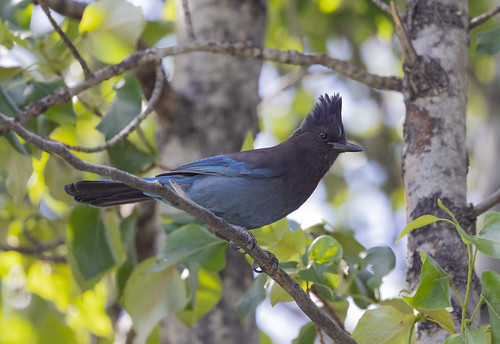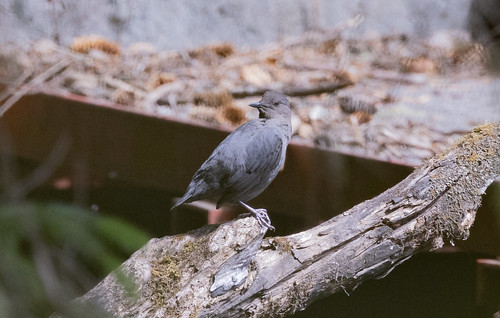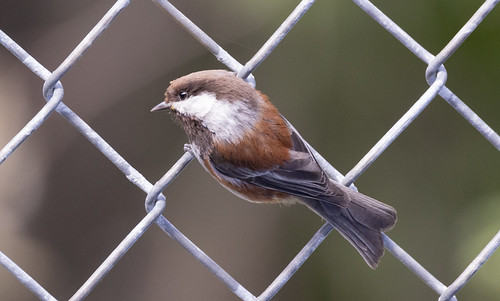In 2001, when Russ and I went on a week-long cruise on a tiny, Native-American-owned ship in Alaska’s Inside Passage, we started in Juneau and made it as far north as Glacier Bay. We visited the Glacier Bay National Park Visitor Center and then continued north and west to get close to calving glaciers. On the cruise and the one day Russ and I spent birding in Juneau, I saw 77 species of which 16 were lifers.
Seward, the furthest south we got on this trip (except on a boat trip to the Kenai Fjords National Park), is almost 500 miles west-northwest of Glacier Bay. I saw only one lifer on the Kenai Peninsula, but enjoyed some of the most thrilling birding of my entire life.
On June 21, we drove from Anchorage down to Seward. Geographical names in Alaska can be confusing: Nome is on the Seward Peninsula while Seward is on the Kenai Peninsula. But the name of the Seward Highway is straightforward even if the 125-mile road from Anchorage to Seward is not.
It goes southeast along the northern coast of the Turnagain Arm of the Cook Inlet of the Gulf of Alaska to the end, then works its way through the Kenai Mountains and down to Seward. We’d already driven on the first stretch, along the Potter Marsh and the start of the Turnagain Arm, during the time we birded around Anchorage. As happened first time around, we did see Dall’s sheep up on the cliffs of the Chugach Mountains above the road, and did not see beluga whales in the Turnagain Arm of Cook's Inlet.
This whole area along the coast out of Anchorage and onto the Kenai Peninsula brought us finally in range of some of the Pacific Northwest birds I’ve seen before along the coast from Oregon, Washington, and British Columbia.
 |
| Erik Bruhnke and Barry Zimmer get up close and personal with a "Northwestern" American Crow who was very interested in Erik's fritter. |
Our first stop of the day, for blueberry fritters at the Alpine Bakery in Girdwood, before we reached the juncture of the highway into the Kenai, gave us the trip’s only looks at the bird formerly known as the Northwestern Crow.
This Pacific Northwest specialty is a bit daintier, with a slightly lower, hoarser voice, than our familiar American Crow. Over time as glaciers receded, American Crows worked their way into the Pacific Northwest, mixing with the Northwestern Crows already there. It’s easy for me to distinguish a Duluth crow from the two Northwestern Crows I watched and listened to as they approached us for treats at the Alpine Bakery, but those differences apparently matter way, way more to birders than they do to the birds themselves. Wherever the ranges overlap, between coastal Washington and British Columbia, the birds hybridize so freely that virtually all the birds in that overlap area have genes of both forms. That's why two years ago, taxonomists lumped Northwestern Crows with American Crows.
I’ve heard some people who spend a lot of time in Alaska ridiculing this decision because of the obvious differences between the coastal Alaskan crows and crows over most of the continental United States, as if taxonomists are stupid. I can understand their frustration because so far, the crows in most of Alaska have not met up with the ones we used to consider pure American crows, but the differences we mere humans focus on clearly don’t matter to the birds themselves. Now just about all the crows from Washington to British Columbia have genes of both types, and that hybrid zone is expanding. That means, by definition, that the two forms are subspecies, not separate species.
A similar situation exists with the Song and Fox Sparrows we saw in the Seward area, but people have understood that for a long time. Those birds are obviously different from Song and Fox Sparrows in other places yet are recognized not as separate species but as subspecies of our regular old Song and Fox Sparrows.
 |
| "Long-billed" Song Sparrow |
 |
| "Sooty" Fox Sparrow |
In the same area around Girdwood, we saw White-winged Crossbills and a gorgeous Townsend’s Warbler—a handsome western species that was one of my Big Year highlights when birding in California in 2013.
In the Seward area, Steller’s Jays...
... another American Dipper...
... the most cooperative Chestnut-backed Chickadees I've ever seen...
...and the least cooperative Rufous Hummingbird I've ever seen...
... were some of the exciting birds that were every bit as wonderful as I’d anticipated. None of them were lifers, but they sure were sights for sore eyes. And the single most thrilling and memorable day of the entire trip—the day we took a boat trip into Kenai Fjords National Park—was yet to come.
